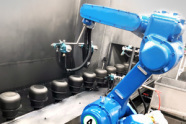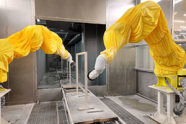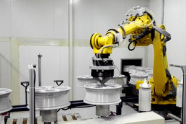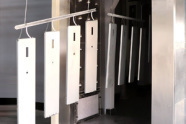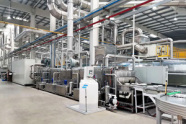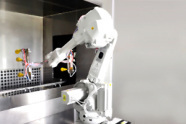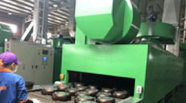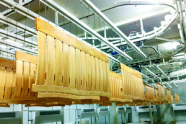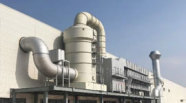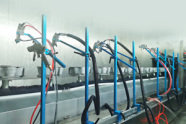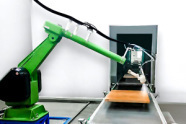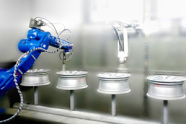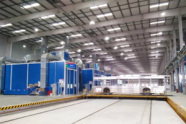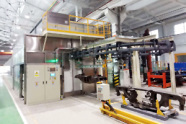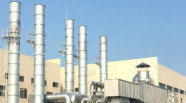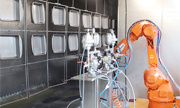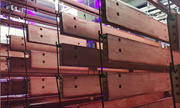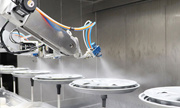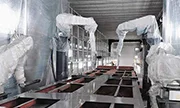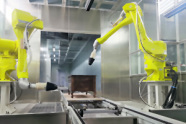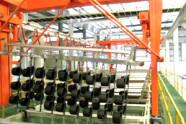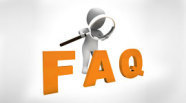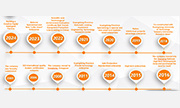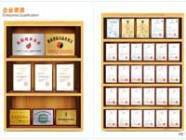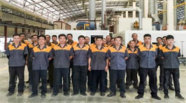All categories
Related News
06
2025
-
08
What Are the Daily Maintenance Tasks for Painting Equipment?
Author:
Chuangzhi Coating
Painting equipment, as a core part of the production line, its stable operation directly affects product quality and production efficiency. For manufacturers of cookware, home appliances, etc., neglecting the daily maintenance of painting equipment may lead to problems such as uneven coating and frequent equipment failures, which in turn increase production costs. As a professional manufacturer of painting line equipment, we have summarized a set of systematic daily maintenance plans based on years of industry experience to help enterprises maximize equipment service life and reduce operation and maintenance costs.
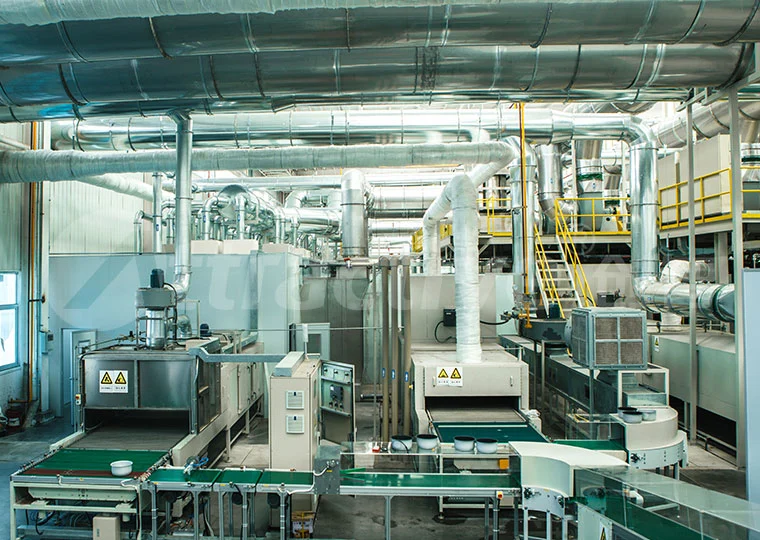
Basic Cleaning: Reducing the Impact of Impurities on Equipment
The cleaning of painting equipment should run through the entire production process, focusing on key components that are prone to accumulating impurities.
Spray guns and nozzles are core components for paint atomization and must be thoroughly cleaned after daily production. Special solvents (such as thinners) can be used to flush the inside of the gun body to remove residual paint and prevent blockage after drying. For robotic arm spray guns in automatic painting lines, it is also necessary to check the wear of the nozzles. If there are scratches or deformation, they need to be replaced in time to ensure uniform atomized particles.
The pipelines, pumps and filters of the paint supply system also need regular cleaning. The filter should be disassembled weekly to remove paint residue and impurities on the filter surface to prevent blockage from causing unstable paint supply pressure. The paint storage tank needs to be emptied once a month, and the inner wall should be wiped clean with a solvent to avoid chemical reactions caused by mixing different batches of paint, which affects coating performance.
In addition, the cleaning of the drying room cannot be ignored. The dust and paint volatiles in the air duct should be cleaned monthly, and check whether there is paint residue accumulation on the surface of the heating pipe to prevent uneven drying caused by reduced heat dissipation efficiency.
Lubrication Maintenance: Ensuring Flexible Operation of Mechanical Components
The mechanical transmission parts of painting equipment (such as conveyor belts, robotic arm joints, lifting mechanisms, etc.) rely on regular lubrication to maintain operation accuracy.
The conveyor chain needs to be coated with special high-temperature lubricating oil every week to avoid jamming or chain breakage due to excessive friction. For the rotating shaft of the robotic arm in the automatic painting line, grease should be dded every 3-5 days according to the operating frequency to ensure smooth movement and accurate positioning. For pneumatic components (such as cylinders, solenoid valves), it is necessary to check the oil mist device of the air source processor daily to ensure sufficient lubricating oil and prevent corrosion of components.
It is worth noting that different components need to be matched with corresponding types of lubricants: high-temperature areas (such as near the drying room) should use high-temperature resistant grease, while precision gears need to use low-viscosity gear oil to avoid grease overflow polluting products.
Regular Inspection: Timely Detection of Potential Faults
Daily inspections need to be carried out in layers, checking from appearance to performance step by step to eliminate potential faults in the bud.
Before starting the machine every day, check the connection status of the equipment power supply, air source, and paint pipeline: confirm that the cable is not damaged, the air pipe is not leaking, and the joint is well sealed. For electrostatic painting equipment, it is necessary to test the grounding resistance (should be less than 1 megohm) to prevent safety accidents caused by static accumulation.
A in-depth inspection should be carried out once a week: check the tension of the conveyor belt, adjust the tightness in time if slipping occurs; check the running sound of the servo motor, abnormal noise may indicate bearing wear; observe the pressure fluctuation of the paint pump, and check the pump seal or filter status if the value is abnormal.
The electrical system should be specially tested every month, including the contact state of contactors and relays in the control cabinet, and the sensitivity calibration of sensors (such as liquid level sensors, temperature sensors). For the PLC control system, program data should be backed up to prevent parameter loss caused by sudden power failure.
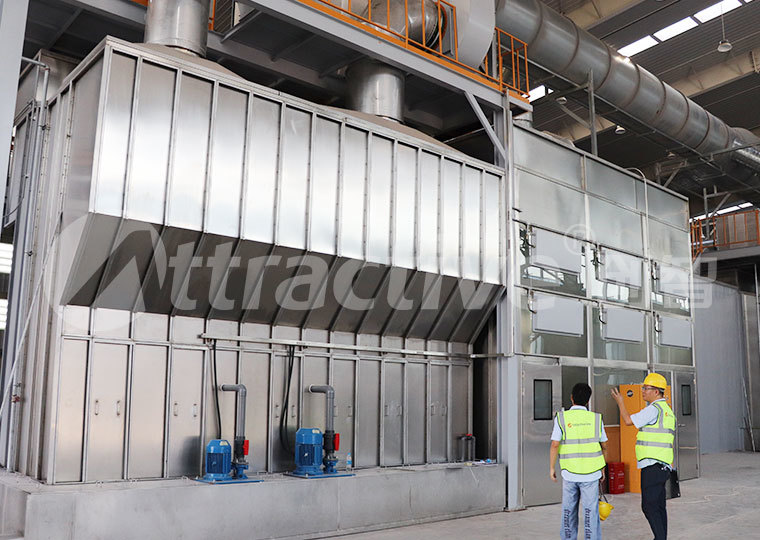
System Maintenance: Developing Special Plans Based on Equipment Characteristics
Different types of painting equipment require targeted maintenance. For example, the bath solution of the electrophoretic painting line needs to monitor the pH value and solid content daily, and the ultrafiltration membrane should be replaced regularly; the recovery system of the powder coating equipment needs to clean the filter element every week to ensure the powder recovery rate reaches more than 95%.
For painting lines with automatic control systems, software inspections should be carried out monthly: check program running logs, clear redundant data; test the response speed of emergency stop buttons, safety gratings and other protection devices to ensure compliance with safety standards.
Record and Feedback: Establishing Maintenance Files for Long-Term Management
Establishing a sound maintenance file is the key to long-term equipment management. Enterprises should assign special personnel to record daily maintenance content, including cleaning time, lubrication parts, inspection data, etc., to form an equipment operation ledger. When equipment fails, the root cause can be quickly located through historical records, shortening maintenance time.
At the same time, regularly summarize common problems found in the maintenance process (such as a certain type of spray gun is easy to block, a certain area of the chain wears too fast), and timely communicate with equipment manufacturers to optimize operating procedures or upgrade components.
Conclusion
The daily maintenance of painting equipment is not a simple "repair", but a systematic project that requires enterprises to establish standardized processes and assign responsibilities to people. Through the organic combination of basic cleaning, lubrication maintenance, regular inspection and system maintenance, it can not only reduce more than 90% of sudden failures, but also extend the equipment service life by 3-5 years. As a supplier of painting line equipment, we can provide customers with customized maintenance training to help enterprises master core maintenance skills, keep equipment in the best operating condition, and guarantee efficient production.
SEO:
Next Page

